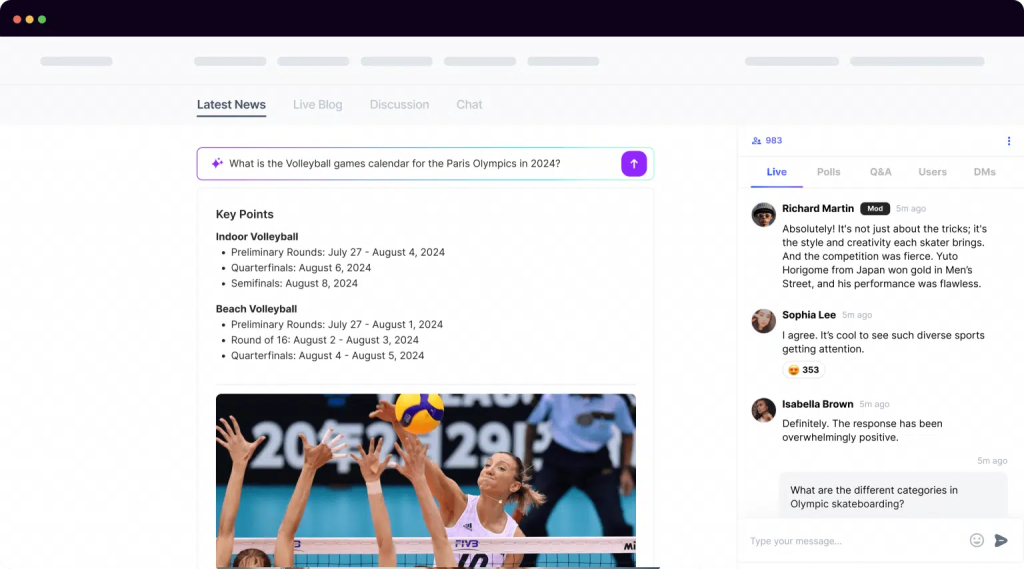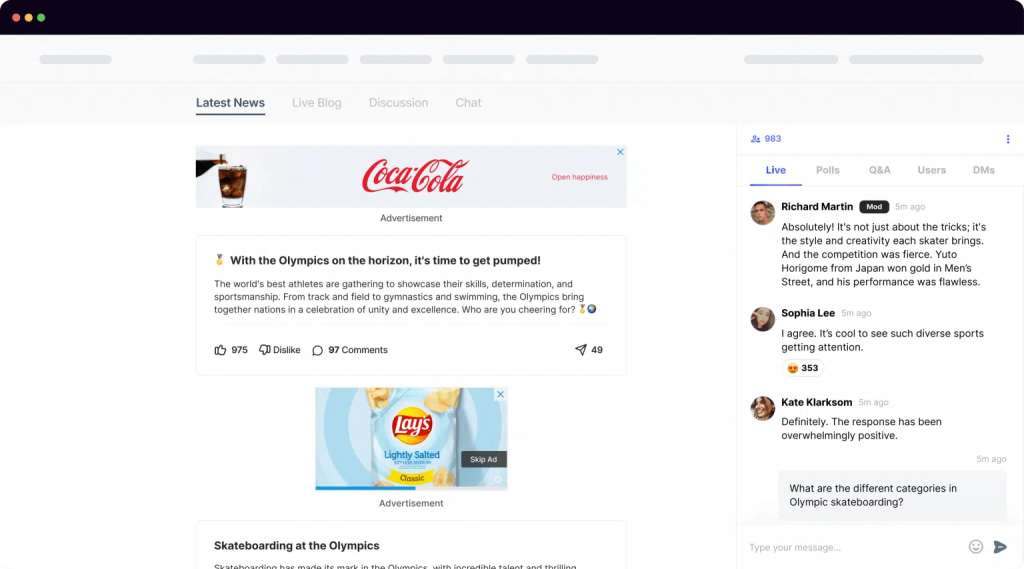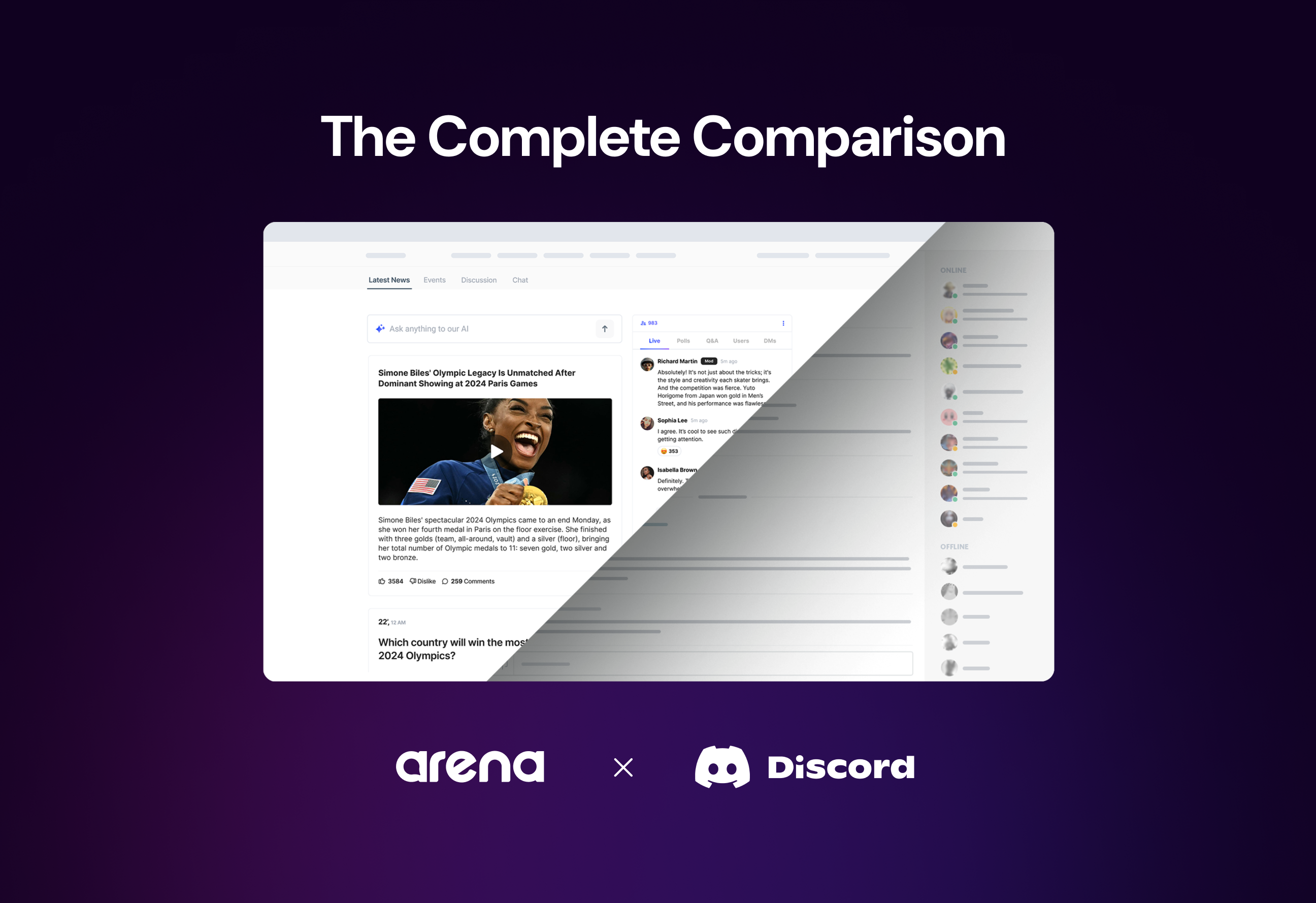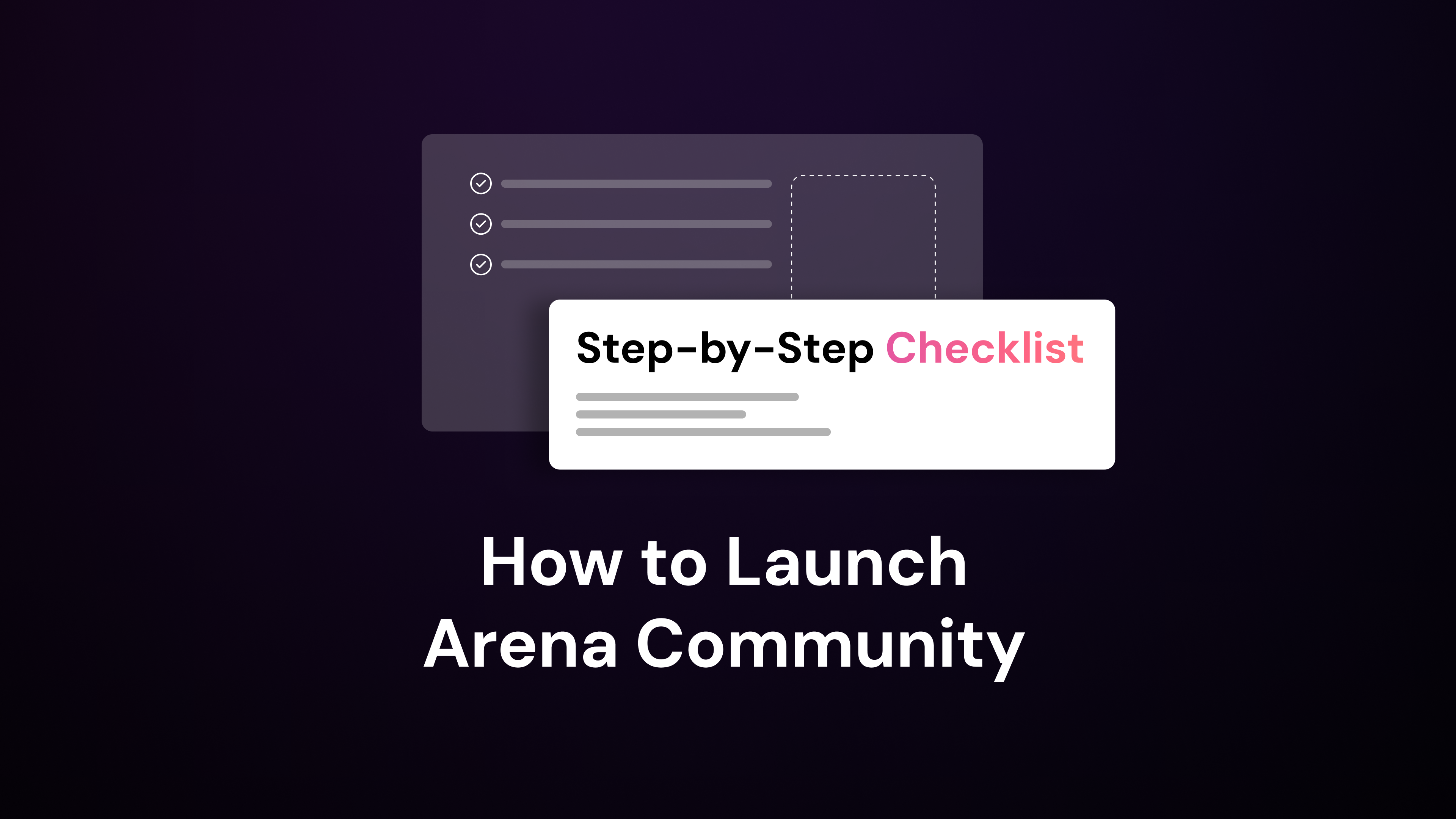Since its launch in 2005, YouTube has become the internet’s biggest source for video content, with over 2.49 billion monthly active users and an estimated 61.8 million creators worldwide. While many of these creators post videos on YouTube, most take their audiences to other platforms – like Instagram, TikTok or Reddit – to actually interact with fans and viewers.
Looking for a solution to this problem, the company recently launched its latest feature: YouTube Communities. Announced on the “Made on YouTube” September 2024 event, the tool will allow subscribers to chat with each other and the creator directly.
As creators explore the best platforms for building deeper engagement, they search for community-building tools that best fit their needs. In this article, we bring you a complete analysis of how the tool works, the pros and cons for creators, and a competitive analysis of YouTube Communities vs Arena Community.
YouTube Communities Feature: A Space by Fans, for Fans
How YouTube Communities Work
YouTube Communities is a mix of forums, subreddits and Facebook groups.
The main idea is to take the conversation further. When fans use the comments section of a video, the discussions are limited to that content itself. With YouTube Communities, fans can interact not only with the creators but also with like-minded peers, while uploading their own content directly to the community.
Once a creator enables their community, anyone who subscribes to their channel can join the conversation. Users can post messages, pictures, videos and more directly on the channel’s fan community.
According to YouTube, the new feature comes from the recognition of the importance of balancing vibrant engagement with an environment where people can be their most authentic selves by sharing content, asking questions and “hanging out”.
Working as an extension of the creator’s channel, the Communities are meant to flow over time, as they would in any other forum-style setting. The goal is to also reduce the pressure on creators being “always available” to their fans, allowing the community to continue in their absence momentarily.
What Are the Key Points of YouTube Communities?
This new community space, linked from the creator’s channels, comes with familiar features like posts and comments, and basic moderation tools.
The key points of YouTube Communities are:
Fan-driven discussions: Fans can kick off conversations and share comments, with creators having the ability to manage participation. Initially, only subscribers can post in Communities, with plans to explore additional moderation options for creators as testing progresses.
Exclusive space: A dedicated area for interaction, offering creators the tools to control their content and brand, while promoting a welcoming environment for meaningful community conversations.
Ongoing dialogue: Discussions extend beyond individual videos or posts, allowing topics to evolve naturally and continue over time.
Community-focused: The space is fueled by fans, creating a sense of community where people with shared interests can connect, exchange ideas, and share their enthusiasm.
Alongside the introduction of the new YouTube Communities feature, the YouTube team is also rolling out a dedicated Community Hub within YouTube Studio, where creators manage their channels and edit videos. This new Community Hub will provide creators with enhanced tools for engaging with their audience, including a Community Spotlight feature and AI-powered reply suggestions to streamline interactions.

Limitations of YouTube Communities
Confined to the YouTube Ecosystem
Although YouTube’s new feature is a great way to engage audiences after a creator’s video ends, the Communities tool is still confined to the platform’s ecosystem.
This means interactions are limited to users who are already on YouTube, preventing creators from fully engaging with audiences across other platforms. Additionally, features like sharing, commenting, and content creation are tied to YouTube’s infrastructure, limiting the flexibility for creators to extend their community beyond YouTube or customize the experience in ways that may be more tailored to their brand or audience needs.
Finally, YouTube Communities do not allow creators to share content from other social media platforms such as Instagram, TikTok or Reddit. This lack of integration causes content to become siloed within the YouTube platform, making it difficult to repurpose or distribute across multiple channels. As a result, valuable content often goes unnoticed, with creators struggling to reach audiences who are spread out across different platforms.
This fragmentation leads to missed opportunities for engagement, and the hard work that goes into producing content can end up wasted if it doesn’t find the right audience at the right time.
Limited Customization and Control
According to YouTube, when building the new Communities tool, the platform gathered the creators’ feedback in order to deliver a well-rounded solution. One of the main complaints was related to community safety and moderation. Creators explained they wanted more control over their communities, from deciding who can post to setting clear community guidelines for behavior.
Although the platform claims to have moderation tools, it is not clear how refined these tools are, whether they can be automated, whether there is a profanity filter, etc. If you spend any time in a YouTube comment section, you know that discussions and offenses can escalate quickly, and these problems may easily migrate to the Communities, especially now that fans can post their own content on the channel instead of just leaving comments.
YouTube also hasn’t been clear on how much creators can actually customize their communities. All Communities seem to have the same layout, background and look and feel, which can take away from the personalized community experience fans are looking for.
Arena Community: The Future of Community Engagement
Unlike YouTube Communities, which are confined to the YouTube platform, Arena Community allows brands, creators, and businesses to build independent, cross-platform communities that offer far more flexibility.
Here are some of the main benefits creators get when choosing Arena Community as their main point of contact with their community.
Cross-Platform Community Building
Arena Community provides seamless integrations with social media, websites, and other digital platforms, ensuring creators and brands have a centralized hub for engagement without being locked into one ecosystem.
Creators can repurpose their social content while bringing their community back from social media to their websites or apps, straightening the bond with fans and increasing monetization opportunities.
For video content, Arena Community offers a Featured Video tool, enabling creators to showcase their latest YouTube or Vimeo videos, along with live streams and reminders for upcoming broadcasts. This feature makes it easy to highlight your most recent content and engage your audience with live events.
Built-in Engagement Features
Arena’s Live Blog and Group Chat tools keep your community engaged and informed at all times. Use the Live Blog to share real-time updates, while Group Chat enables instant communication, fostering stronger connections among members.
Interactive features like Polls and Q&A help maintain the conversation and encourage active audience participation during live events and community updates.
Community members also have access to a forum-like discussion board, where they can interact with each other through comments, shares, upvotes, and downvotes.
AI-Powered Community
Arena Community comes with several artificial intelligence features that make the creator’s everyday job much easier. AI Post is especially useful for writing and improving written content, which helps guarantee that your community members will get frequent updates.
Building a community is about ensuring your fans receive the content they’re looking for, whether it’s created by you or shared by fellow members. Arena Community addresses this with AI-powered Feed Search and AI Summary, allowing users to quickly find relevant content and access concise summaries of key information.

Unlike platforms like YouTube, where creators have limited control over ads, user moderation, and access to user data, Arena Community empowers you with full ownership.
Arena Community comes with built-in moderation features. You can either choose to moderate content yourself or have AI Moderation do it for you. Creators can add words to the profanity filter, block users, and exclude any comments or chats at any point, keeping your community safe at all times.
The platform’s robust dashboard gives you access to just about anything you need to know about your community behavior. By gathering first-party data directly from users, you can dive into their preferences and activity like never before.
Monetization Opportunities
While YouTube does have monetization sources for creators, they are mostly limited to video ads or pay per number of views. When bringing their Community to a creator-owned website or app, you unlock new sources of revenue, that are much more aligned with your community’s interests.
When you build your own community, the monetization possibilities are endless. Creators can easily partner with brands to create sponsored content, affiliate links and optimized ads. Besides, you can also choose to have premium channels and content, that require your fans to pay a subscription fee to access.

YouTube Communities vs. Arena Community: Which One is Best?
Digital content creators are fueled by fan engagement, and giving them the best experience should be on top of your priorities list. While the launch of YouTube Communities is the right step towards audience engagement, it is also a limiting experience not only for the fans but also for the creators.
YouTube’s platform restricts creators’ control over user data, content moderation, and advertising options, limiting the ability to create a truly personalized experience. Fans, in turn, are confined to the platform’s ecosystem, with fewer opportunities for direct interaction and deeper engagement outside of its preset structure.
Besides, YouTube Communities is currently available for only a handful of creators, and is still uncertain when it will be available for all creators.
Ultimately, while YouTube’s new community feature is exciting, Arena Community offers a more versatile, powerful, and customizable solution for creators, brands, and bands looking to build lasting relationships with their audience. Arena allows you to build an independent, cohesive community that grows with you—making it the best option for those who want to create meaningful and lasting engagement.



